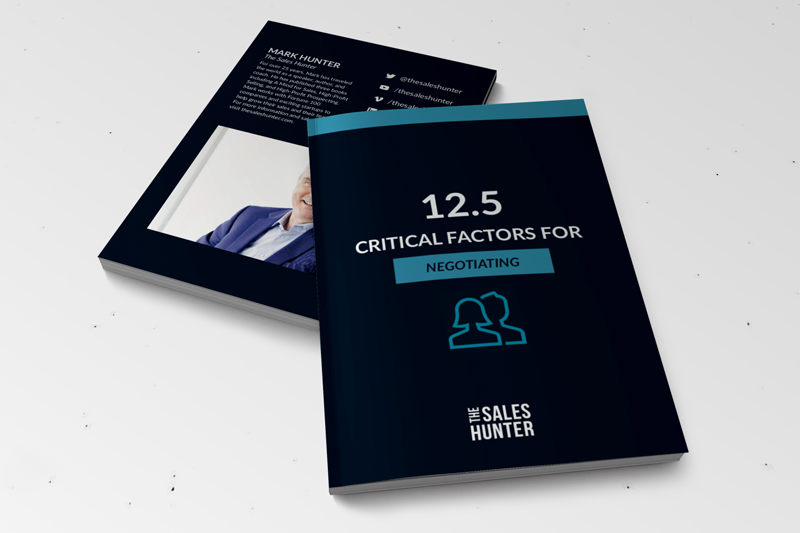 An easy way to get a customer over the price hurdle is by having two pricing options — one higher priced and the other one set at your regular price.
An easy way to get a customer over the price hurdle is by having two pricing options — one higher priced and the other one set at your regular price.
Retailers are very good at using this technique, and whether you’re in a B2B or B2C environment, the process works the same.
To help me explain it let me show you how retailers do it.
A retailer may take a single item — one that is high-priced — and place it in the middle of a merchandising table with a sign prominently showing the high-price. Around the perimeter of the merchandising table will be similar items at a lower price, again with a sign showing their price.
The contrast becomes apparent very quickly.
The shopper sees the high-priced item, and then when they see the lower-priced item, they naturally think the lower-priced item is quite a bargain and the price is very affordable.
The beauty of this technique is the customer makes the price comparison themselves. There is nothing you have to do other than show them the two options.
How you show the higher-priced option is up to you. One approach is to merely have a brochure or flyer of the higher-priced option in a location where the customer can see it when you’re meeting with them.
Another approach is use the higher-priced item for your demonstration, with the idea being you get the customer engaged with you and sharing with you the benefits they desire.
With this approach, you can either stay with the higher-priced item and look to close the sale with that item — or if there is price resistance, move down to a lower-price item.
However you chose to use the strategy, the key is to make sure you are using price points that are significantly different. If they’re too close, the customer may attempt to get you to give them the higher-priced item at the lower price.
Copyright 2012, Mark Hunter “The Sales Hunter.” Sales Motivation Blog.














One Response
Nice tip Mark,thanks and that strategy is very useful in a modified way when selling fitness members to our friends from the “sub Continent” They like to,umm “haggle” but sometimes don’t know they need to “leave a little salt on the bread”(with apologies to Bryce Courtenay.
Cheers
Kim